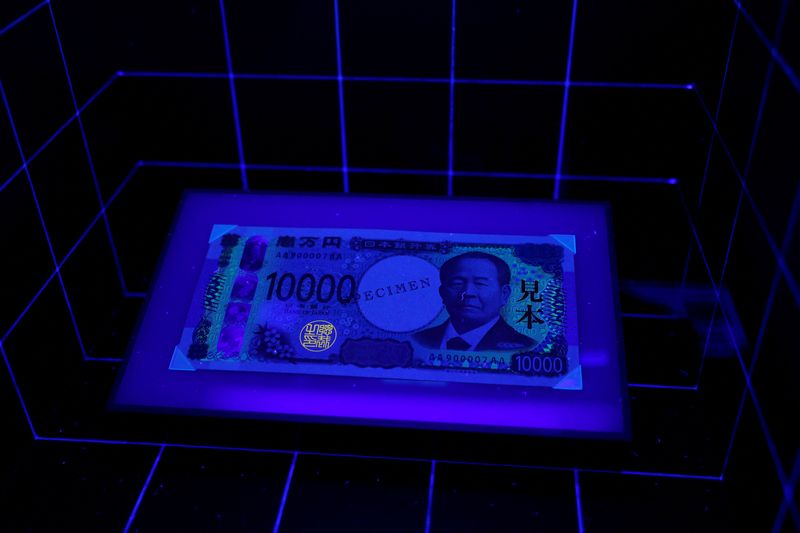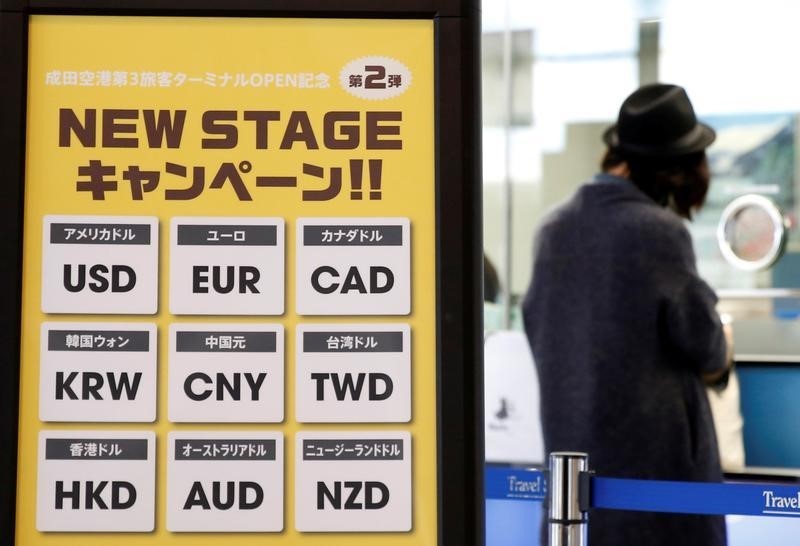By Irene Wang and Kantaro Komiya
TOKYO (Reuters) – Japan began circulating its first new banknotes in two decades on Wednesday, featuring three-dimensional portraits of the founders of financial and female educational institutions in a bid to frustrate counterfeiters.
The banknotes use printed patterns to generate holograms of the portraits that look in different directions depending on the viewing angle. This uses a technology that, according to the Japanese National Printing Bureau, is the first in the world for paper money.
“Faces of those who represent Japanese capitalism, women’s empowerment and technological innovation are on the new bills,” Prime Minister Fumio Kishida said at a meeting.
The move comes just as the economy is entering a growth-driven phase for the first time in three decades, he added.
Major companies are raising worker wages at the fastest pace in 33 years, but persistent inflation fueled by the rapid weakening of the yen is keeping consumption and business sentiment sluggish, recent economic data shows.
Existing accounts will remain in use, but train stations, parking lots and ramen shops are scrambling to upgrade payment terminals as the government pushes consumers and businesses to use less cash in its bid to digitalize the economy.
The new 10,000 yen ($62) note depicts Eiichi Shibusawa (1840-1931), the founder of the first bank and stock exchange, often called “the father of Japanese capitalism.”
The new 5,000 yen note portrays educator Umeko Tsuda (1864-1929), who founded one of the first women’s universities in Japan, while the 1,000 yen note features a pioneering medical scientist, Shibasaburo Kitasato (1853-1931).
While Kishida talked about the latest technology to combat counterfeiting, this is not a major problem in Japan. The 681 counterfeit banknotes discovered by police in 2023 represented a sharp drop from the record high of 25,858 in 2004.
Authorities plan to print about 7.5 billion newly designed banknotes by the end of the current fiscal year, increasing the 18.5 billion banknotes, worth 125 trillion yen, in circulation by December 2023.
“Cash is a secure means of payment that can be used by anyone, anywhere, at any time, and it will continue to play an important role” despite alternatives, central bank Governor Kazuo Ueda said.
The Bank of Japan has experimented with digital currencies, but the government has not yet decided whether to issue a digital yen.
‘NO SALES IMPACT’
The first paper money renewal since 2004 spurred businesses to upgrade point-of-sale terminals for cash-loving customers.
Cash payments in Japan have almost tripled in the past decade and will represent 39% of consumer spending by 2023, but still lag behind global peers and should rise to 80% to boost productivity, the government says.
Nearly 90% of ATMs, train ticket machines and retail cash registers are ready for the new banknotes, but only half of restaurant and parking ticket machines, according to the Japan Vending Machine Manufacturers Association.
Nearly 80% of the country’s 2.2 million drinks machines also need upgrades, it added.
“It may take until the end of the year before we respond to this,” said Takemori Kawanami, director of ticket machine company Elcom. “That’s too slow, but we are short of components,” he added, as customer orders for upgrades exceeded expectations.
Many Japanese fast-food restaurants, such as ramen shops and beef shops, use ticket machines to reduce labor costs, but some small business owners battling inflation are unhappy with the additional investment required.

“The machine replacement will not affect sales, so it is only negative for us, on top of the rising costs of labor and ingredients,” said Shintaro Sekiguchi, who has spent about 600,000 yen on ticket machines at three ramen shops he operates in Tokyo runs.
($1=161.6500 yen)


